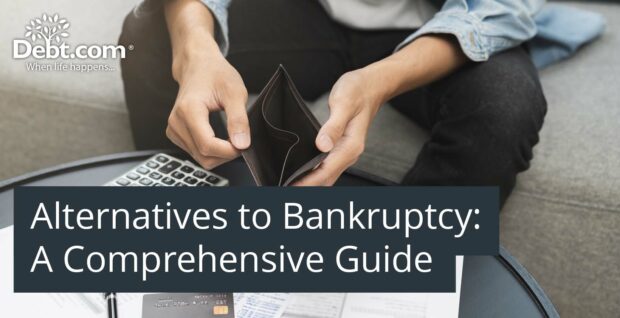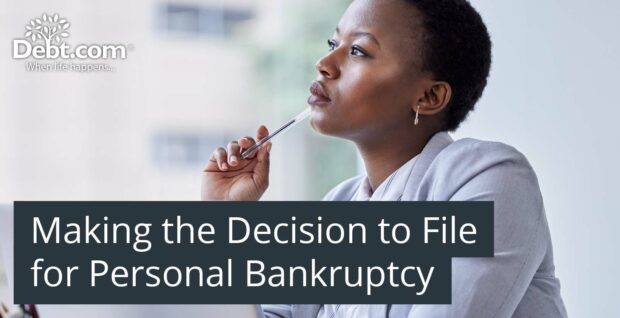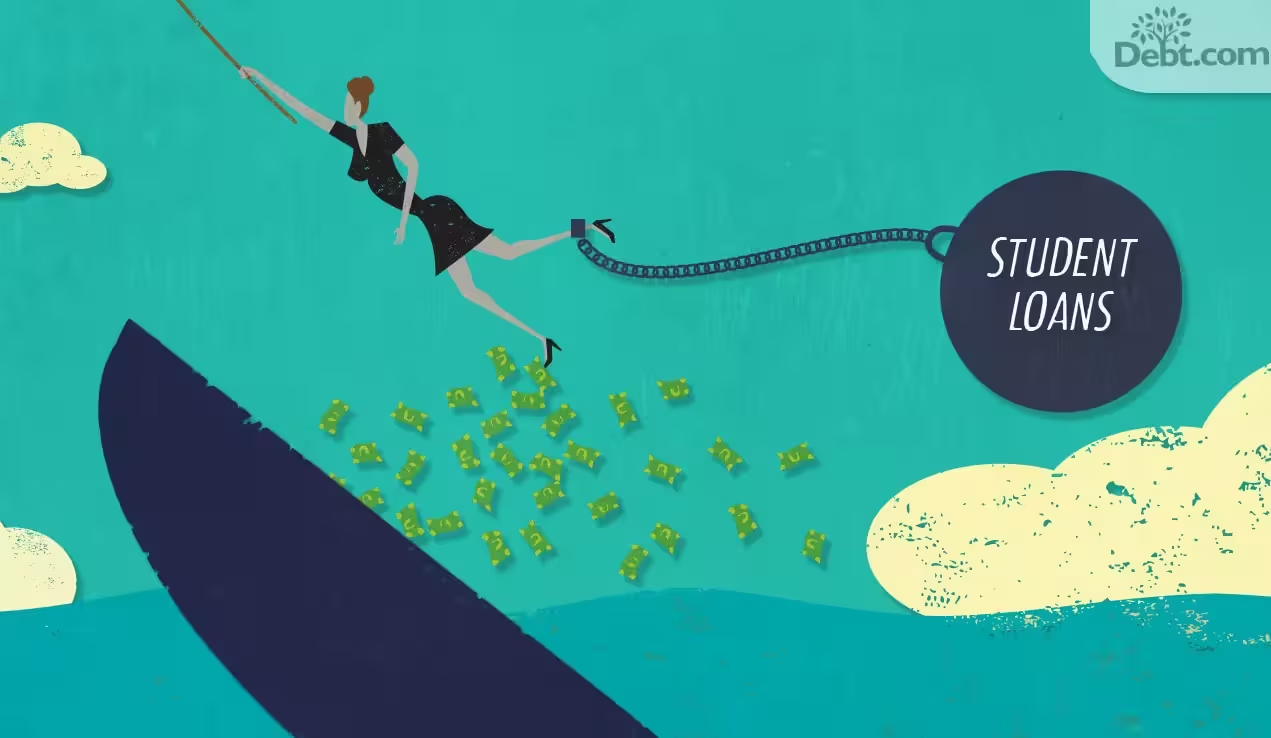
Feeling buried under a mountain of debt? If other options like debt consolidation, a debt management program, or debt settlement won’t work for your situation, it may be time to consider filing for bankruptcy. While it may seem daunting, Chapter 7 bankruptcy can offer a fresh start, even if you’re facing financial hardship. This guide will walk you through the process of filing for Chapter 7 bankruptcy when you have limited funds. We’ll also explore various cost-saving measures, legal assistance options, and critical details you should be aware of to make informed decisions throughout the process.
Table of Contents
Understanding Chapter 7 Bankruptcy and Its Purpose
What Is Chapter 7 Bankruptcy?
Chapter 7 bankruptcy, often referred to as liquidation bankruptcy, is a legal process that can provide significant relief for individuals struggling with overwhelming debt. It’s designed to help people discharge most of their unsecured debts, such as credit card bills and medical debt. Not all debts can be discharged through Chapter 7. Obligations like student loans, child support, and certain tax debts are typically non-dischargeable.
When you file for Chapter 7 bankruptcy, a court-appointed trustee will review your financial situation. They will identify any non-exempt assets, such as valuable possessions or real estate that isn’t essential for your daily living. However, most people who file for Chapter 7 bankruptcy qualify for exemptions that protect their essential property, like their primary residence, vehicle, and basic household goods. This means that in many cases, you won’t lose any significant assets.
Who Can Qualify for Chapter 7?
Not everyone qualifies for Chapter 7 bankruptcy. To determine eligibility, a means test is used to assess your income. If your income falls below a certain threshold, you may qualify for Chapter 7. This means test is designed to prevent abuse of the bankruptcy system by ensuring that those who can afford to repay some of their debts are directed towards Chapter 13 instead.
To pass the means test, you’ll need to provide detailed financial information, including your income, expenses, and financial obligations. Even if your income exceeds the median income for your area, you may still qualify for Chapter 7 if you can demonstrate that your expenses leave you with insufficient disposable income to repay your debts.
Why People File for Chapter 7 Bankruptcy?
Many people turn to Chapter 7 bankruptcy as a last resort after exhausting other options. Job loss, medical emergencies, or unexpected financial setbacks can quickly overwhelm even the most responsible individuals. When traditional debt relief methods, such as debt consolidation or credit counseling, prove ineffective, Chapter 7 offers a fresh start.
By filing for Chapter 7, individuals can discharge most unsecured debt, which can provide significant relief from the constant stress of creditor harassment and collection calls. Additionally, there are strategies to minimize or even eliminate the costs associated with filing for bankruptcy, making it accessible to those with limited financial resources.
Costs Associated with Filing Chapter 7 Bankruptcy
Typical Fees Involved in Chapter 7
Filing for Chapter 7 bankruptcy involves several costs. Here’s a breakdown of the typical expenses:
- Court Filing Fee: As of 2024, the standard court filing fee is approximately $338.
- Attorney Fees: Legal fees can vary widely based on your specific circumstances, location, and the complexity of your case. Generally, you can expect to pay between $1,000 and $3,500. Consulting resources like the American Bar Association or local legal aid organizations can provide insights into average fees in your area.
- Credit Counseling and Debtor Education: Mandatory credit counseling and debtor education courses are required before and after filing. These courses typically cost between $10 and $50 each.
How Filing Fees Can Be a Barrier for Low-Income Filers
The costs associated with filing for Chapter 7 bankruptcy can be a significant hurdle, especially for individuals with limited financial resources. However, there are options available to help with these expenses.
For those facing financial hardship, the court may grant fee waivers or allow installment payments for the filing fee. Additionally, many bankruptcy attorneys offer flexible payment plans and sliding-scale fees to accommodate clients with limited budgets. In some cases, pro bono legal services may provide guidance and support throughout the process.
By exploring these options, individuals can navigate the bankruptcy process more effectively and alleviate the financial burden of filing.
Options for Filing Chapter 7 Bankruptcy with No Money
Filing for a Waiver of the Filing Fee
One of the ways to reduce the cost of filing is to request a fee waiver. The court may waive the $338 filing fee if your income is below 150% of the federal poverty level and you cannot afford to pay it in installments. To apply for a waiver, you must fill out an additional form explaining your financial situation and why you cannot pay the fee.
The waiver application process is fairly straightforward. It’s essential to be honest and provide accurate information. The court will review your financial situation and decide whether to approve your request. If approved, you can move forward with the bankruptcy process without worrying about the upfront cost.
Requesting to Pay the Filing Fee in Installments
If you don’t qualify for a fee waiver, another option is to request to pay the filing fee in installments. Typically, the court will require you to propose an installment plan outlining how and when you will make each payment. For example, you could propose to pay $100 per month over three to four months, depending on what the court will allow. This can make the financial burden more manageable. If approved for an installment plan, it’s crucial to make each payment on time to avoid complications.
Finding Pro Bono Legal Assistance
Another potential option is to seek pro bono legal assistance. Many attorneys provide free services for low-income individuals, or you may be able to find help through legal aid organizations. These groups often have resources specifically for those who cannot afford to pay for representation. Contacting your local bar association or community legal aid office can be a good starting point for finding a pro bono attorney.
Legal aid organizations are often overwhelmed with requests, so it’s important to apply early and provide all necessary documentation to demonstrate your financial situation. Specific documents you may need include recent tax returns, pay stubs, bank statements, a list of monthly expenses, and proof of any other income or government assistance. Pro bono attorneys can be invaluable in helping you navigate the complexities of bankruptcy law, ensuring that your paperwork is filled out correctly and that you understand each step of the process.
Filing Chapter 7 Without an Attorney (Pro Se Filing)
If hiring an attorney isn’t feasible, you can file Chapter 7 bankruptcy on your own, known as a “pro se” filing. While this can save on legal fees, it’s important to understand the risks. Mistakes on the complex legal forms can lead to delays or even the dismissal of your case.
If you decide to file pro se, consider utilizing self-help guides, online tutorials, and resources provided by local courts. These resources can provide valuable information and help you navigate the process. Remember, it’s crucial to be meticulous and thorough when completing the forms, as errors can have significant consequences.
Step-by-Step Guide to Filing Chapter 7 Bankruptcy on a Budget
Step 1: Gather Necessary Financial Information and Documents
The first step in filing for Chapter 7 bankruptcy is to gather all your essential financial documents. This includes income records (such as pay stubs and tax returns), debt statements (credit cards, medical bills, personal loans), and information about your assets. Organizing these documents will streamline the process and ensure the accurate completion of bankruptcy forms.
A clear financial picture will help you determine your eligibility for Chapter 7 bankruptcy and facilitate communication with your bankruptcy trustee.
Step 2: Complete the Required Bankruptcy Forms
Next, you must complete a series of bankruptcy forms that provide a detailed financial overview. These forms, including Schedules A-J, require information about your income, debts, and assets. Accurate and thorough completion of these forms ensures a smooth bankruptcy process. Mistakes or omissions can lead to delays or even the denial of your discharge.
To assist you in completing these forms, consult self-help guides from legal aid organizations or the U.S. Courts website. These resources provide step-by-step instructions to help you navigate the process.
Step 3: Take a Credit Counseling Course
Before filing, you must take a credit counseling course from an approved provider. This course can often be completed online and must be taken within 180 days before filing. Many providers offer low-cost or even free options for those in financial hardship.
The course typically lasts about 60 to 90 minutes and provides an overview of alternatives to bankruptcy, personal budgeting, and debt management. After completing the course, you’ll receive a certificate, which must be filed with your bankruptcy paperwork. It’s important to choose a provider approved by the U.S. Trustee Program to ensure that your certificate is valid.
Step 4: File the Bankruptcy Petition and Apply for a Fee Waiver or Installment Plan
After completing the required forms, submit your bankruptcy petition to the court. At this time, you can also apply for a fee waiver or an installment payment plan to cover the filing fee.
Filing your petition officially starts your bankruptcy case and triggers an automatic stay, a legal protection that halts most collection activities by creditors. These include phone calls, wage garnishments, and lawsuits. Double-check all your paperwork for accuracy before filing to avoid delays.
Step 5: Attend the 341 Meeting of Creditors
Once your case is filed, you will be required to attend a meeting of creditors, also known as the 341 meeting. The 341 meeting is generally informal and does not occur in a courtroom. During this meeting, the bankruptcy trustee and creditors may ask questions about your financial situation and bankruptcy forms. This meeting is typically straightforward, however it’s important to be prepared and honest.
Step 6: Complete the Post-Filing Debtor Education Course
You must complete a debtor education course to finalize the Chapter 7 bankruptcy process. This course, which typically takes about two hours, can usually be completed online at a low cost. You’ll receive a certificate that must be filed with the court upon completion.
This course is designed to provide valuable financial education, covering budgeting, credit management, and avoiding future debt. Completing this course is essential to ensure your debts are officially discharged. Failure to do so may result in your case being closed without a discharge, leaving you still liable for your debts.
Benefits and Drawbacks of Filing Chapter 7 Pro Se
Advantages of Filing Chapter 7 on Your Own
The primary advantage of filing for Chapter 7 bankruptcy without an attorney is the potential cost savings. By avoiding attorney fees, you can significantly reduce the overall expense of the process. It also gives you complete control over the process. You can work at your own pace and make decisions without relying on an attorney. It also gives you an in-depth understanding of bankruptcy law and procedures. This knowledge can be valuable in managing your finances in the future.
Potential Challenges and Risks
It’s important to weigh these potential benefits of filing on your own against the risks involved. Navigating complex legal procedures without professional guidance can lead to mistakes, delays, and even the denial of your discharge. Understanding legal terminology and ensuring accurate form completion are crucial to a successful outcome. Additionally, bankruptcy can significantly impact your credit score, and without proper guidance, you may make decisions that further damage your financial future. While it’s possible to file pro se, it’s generally recommended to consult with a bankruptcy attorney to minimize risks and maximize the benefits of the process.
Common Mistakes to Avoid When Filing Chapter 7 Pro Se
Missing or Incorrect Information on Bankruptcy Forms
One of the most common mistakes is providing incorrect or incomplete information on your bankruptcy forms, such as undervaluing assets, misreporting income, or omitting debts. Even small errors can lead to significant delays or complications in your case.
Be diligent in gathering all your financial information and double-checking the accuracy of your responses. If you are unsure about any part of the form, seek assistance from a reputable self-help resource or a legal aid organization.
Failing to Attend Required Courses and Meetings
It’s essential to schedule and complete both the pre-filing credit counseling and the post-filing debtor education courses. Additionally, make sure to attend the 341 meeting of creditors as required. Missing these steps can lead to delays or even prevent your debts from being discharged. Set reminders and keep all relevant documents organized to ensure that you meet these obligations.
Not Exploring Free Legal Assistance
Many people assume they cannot afford an attorney, but legal aid and pro bono services are available to help low-income individuals. Not seeking out these services can make the process far more challenging and increase the likelihood of costly errors. Contact local legal aid organizations or consult the American Bar Association for potential resources in your area.
Alternatives to Chapter 7 Bankruptcy
Filing for bankruptcy should be considered a last resort, as it can significantly impact your credit score and remain on your credit report for 10 years. Before taking this step, exploring other debt relief options is crucial. If you’re struggling with debt and need guidance, consider contacting one of our certified credit counselors at (844) 818-0443. They can assess your financial situation and recommend appropriate debt relief solutions.
Debt Settlement and Negotiation Options
Debt settlement is a process where you negotiate with creditors to pay a portion of your debt in exchange for a full discharge of the remaining balance. This can significantly reduce your total debt but does have some drawbacks. Debt settlement can negatively impact your credit score and may take longer than other debt relief options.
You can negotiate with creditors directly or enroll in a debt settlement program to initiate the debt settlement process. A debt settlement program can provide professional assistance in negotiating with creditors on your behalf.
If you negotiate directly with creditors, be honest about your financial situation and ask if they offer any hardship programs or options for reducing your debt. This approach can help you find a solution that works for you and your creditors without bankruptcy.
Debt Management Programs
Debt management programs (DMPs) can help you organize your finances and pay off debt more efficiently. You enroll in the program through a credit counseling agency that helps you find a monthly payment that works for your budget.
The credit counselors work with your creditors to negotiate lower interest rates, consolidate payments, and create a personalized repayment plan tailored to your budget. This approach can help you avoid the severe credit impact of bankruptcy. It often improves your credit score. It also instills healthy financial habits and sets you on a path to financial stability.
Understanding Chapter 13 as an Option
If you’re considering bankruptcy but Chapter 7 isn’t a suitable option, Chapter 13 might be a better fit. Unlike Chapter 7, Chapter 13 allows you to restructure and repay your debts over a period of three to five years through a court-approved repayment plan. This approach can help you keep valuable assets, such as your home or car, and avoid liquidation.
To qualify for Chapter 13, you’ll need a steady income to make regular payments. While Chapter 13 can positively impact your credit by demonstrating responsible repayment behavior, it will still remain on your credit report for seven years. However, compared to the ten-year impact of Chapter 7, Chapter 13 can be a more favorable option for some individuals.
Key Takeaways for Filing Chapter 7 Bankruptcy with No Money
Filing Chapter 7 bankruptcy without payment is possible but requires careful planning and understanding of your options. Exploring fee waivers, installment payments, and pro bono legal assistance can help make bankruptcy accessible. If you decide to proceed independently, be prepared to navigate the process thoroughly and avoid common pitfalls.
Bankruptcy can provide a fresh financial start, but weighing all your options and making the best decision for your situation is essential. If you are struggling with debt and considering Chapter 7 bankruptcy, take the time to understand all the steps involved and seek assistance where possible.
A successful bankruptcy filing can help you regain control of your finances and provide much-needed relief from overwhelming debt. Thorough preparation, accurate information, and a willingness to seek help when needed will be key factors in ensuring the best possible outcome for your financial future.












